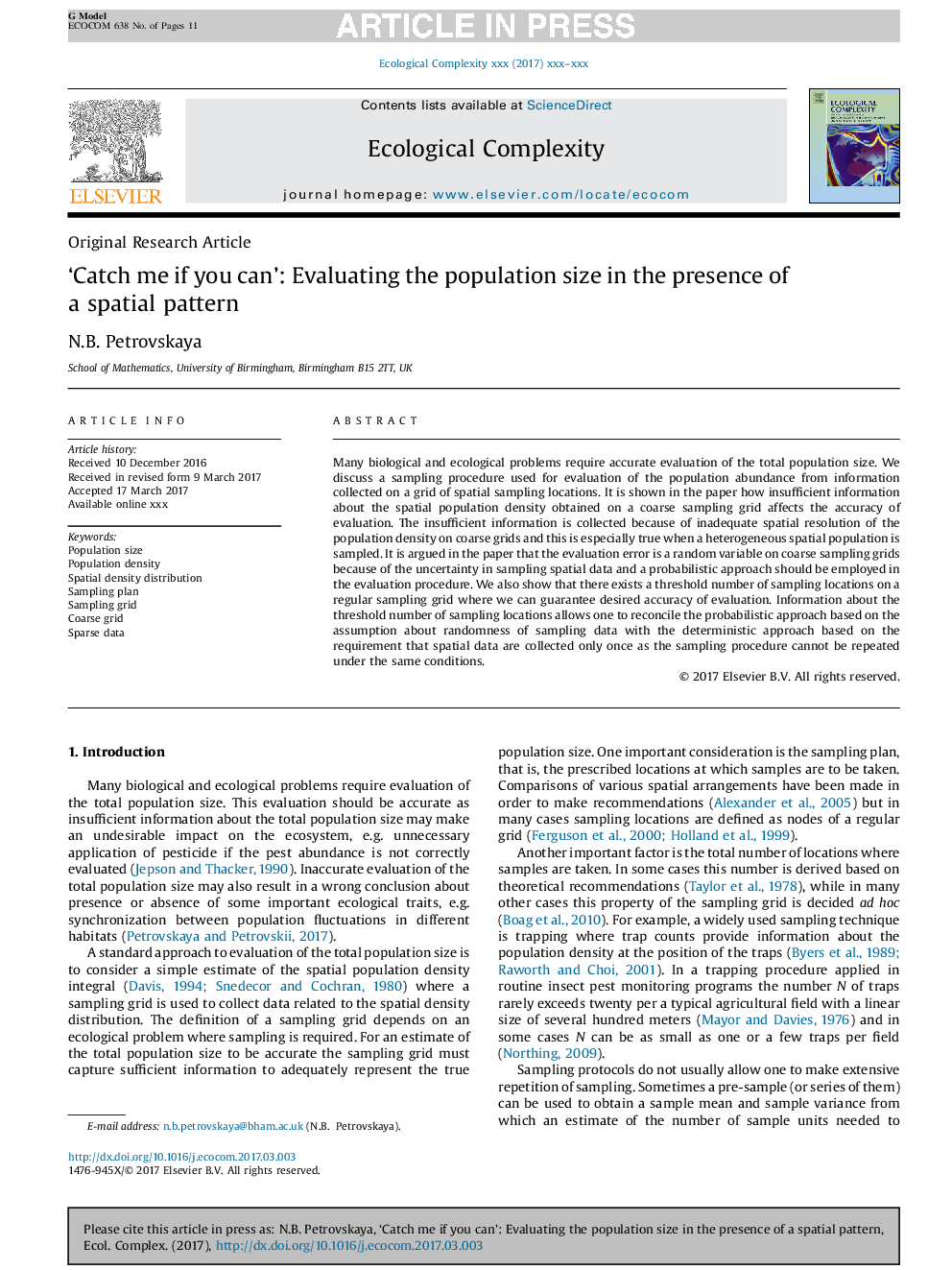| Article ID | Journal | Published Year | Pages | File Type |
|---|---|---|---|---|
| 8844826 | Ecological Complexity | 2018 | 11 Pages |
Abstract
Many biological and ecological problems require accurate evaluation of the total population size. We discuss a sampling procedure used for evaluation of the population abundance from information collected on a grid of spatial sampling locations. It is shown in the paper how insufficient information about the spatial population density obtained on a coarse sampling grid affects the accuracy of evaluation. The insufficient information is collected because of inadequate spatial resolution of the population density on coarse grids and this is especially true when a heterogeneous spatial population is sampled. It is argued in the paper that the evaluation error is a random variable on coarse sampling grids because of the uncertainty in sampling spatial data and a probabilistic approach should be employed in the evaluation procedure. We also show that there exists a threshold number of sampling locations on a regular sampling grid where we can guarantee desired accuracy of evaluation. Information about the threshold number of sampling locations allows one to reconcile the probabilistic approach based on the assumption about randomness of sampling data with the deterministic approach based on the requirement that spatial data are collected only once as the sampling procedure cannot be repeated under the same conditions.
Related Topics
Life Sciences
Agricultural and Biological Sciences
Ecology, Evolution, Behavior and Systematics
Authors
N.B. Petrovskaya,
